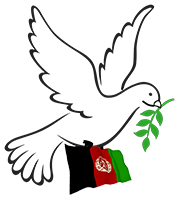The aid has also doubled the number of malnourished children receiving treatment, from 1.1 million in 2021 to 2.2 million in 2023.
The United Nations Office for the Coordination of Humanitarian Affairs (UNOCHA) reports that Afghanistan has received approximately $6.7 billion in aid since the Islamic Emirate assumed power in 2021 which has significantly alleviated the country’s humanitarian crisis.
In its November 2024 Humanitarian Update, OCHA noted that 29.2 million people required aid in 2023. However, improvements in food security, healthcare, education, protection, sanitation, and shelter have since stabilized the situation.
Despite these gains, natural disasters, climate change, and geopolitical tensions continue to threaten Afghan lives.
According to the report, “Humanitarian efforts have led to a 14-percentage-point reduction in IPC 4 populations and an 8-percentage-point reduction in IPC 3 populations. By November 2024, the number of people in IPC 4 conditions is expected to decrease to 3.1 million, or 7% of the population.”
The aid has also doubled the number of malnourished children receiving treatment, from 1.1 million in 2021 to 2.2 million in 2023. Furthermore, the number of health facilities rose from 422 in January 2022 to 908 by the end of 2023, significantly enhancing healthcare services.
By 2023, 11.6 million people accessed primary healthcare services, compared to 7.9 million in 2021. Maternal mortality rates slightly declined, from 638 to 620 per 100,000 live births.
However, the report highlights Afghanistan’s vulnerability to climate change, with the country ranking among the top 10 most affected globally.
Glacier melting, reduced water availability, and desertification—impacting 75% of land in northern, western, and southern regions—have exacerbated poverty and displacement.
OCHA warned that funding gaps could reverse these gains, posing risks to ongoing humanitarian efforts.
 Afghanistan Peace Campaign
Afghanistan Peace Campaign